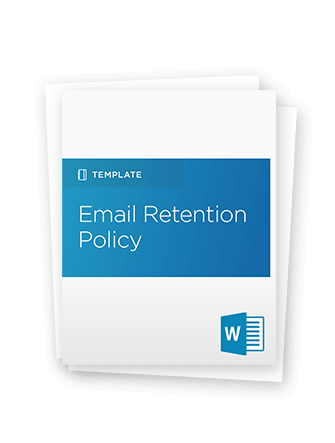Email Archiving vs. Email Backups – Everything You Need To Know

A common source of confusion about email storage is the difference between an email backup and email archiving. Oftentimes, the two are assumed to be synonymous, which isn’t the case — these are two distinct processes with separate objectives and real impacts on your business. Read on to learn more about the differences between archiving and backup, which one is better for your needs and answers to frequently asked questions.
What Is an Email Backup?
An email backup is an exact copy — or a “snapshot” — of everything stored in your email database at a given point in time and is used as a way to restore lost data in the event of hardware malfunctions, corruption or cloud failures. It’s important to note that only one of these snapshots can exist as your backup at any time, which means that when replaced, the old backup is destroyed with the new one existing in its place.
What Is Email Archiving?
A public library is an archive of printed books, where knowledge is permanently stored. Periodically, new knowledge is added to the catalog. And when visitors wish to access a book, there’s an established system in place that allows them to do so quickly and efficiently. The books kept in the library are only meant to be read and cannot be altered or destroyed in any way.
Email archives can be thought of in much the same way. Like a library, they are meant to offer long-term storage solutions for businesses and other organizations, with new emails stored alongside older ones. Similar to a library’s books, the emails stored in an archive can be accessed and read but not edited or deleted.
Archiving vs. Backup: What’s the Difference?
While archiving and backup are both methods of retaining a record of an organization’s email communications, this is essentially where the similarities end. Take a look at the following chart to see how they differ from each other:
| Email Archiving | Email Backup | |
| What Is It? | An organized method of retaining email communications for extended periods of time | A 1:1 copy of an organization’s email database, reflective of a certain point in time |
| Objective | To save all email communications, while maintaining their functionality, for regulatory compliance and eDiscovery purposes | To protect email data from compromising events, such as loss or corruption |
| Differentiating Factors |
|
|
Which Is Better?
As both processes are intended for different purposes, the answer to this question depends on your goals. If you need a way to safeguard your email data against potential compromise, then performing periodical backups may be a better option. However, for longer-term storage and the ability to comply with regulatory requirements or eDiscovery requests, you’ll need to find an email archiving solution. This is because a backup doesn’t offer the same search functionality nor is it a reliable repository.
For example, if emails are accidentally deleted or corrupted and a new email backup is made before they are recovered, then those files are lost forever when the new backup replaces the existing one.
Similarly, some backups require a full restoration, which opens the door for your email database to be replaced with an out-of-date backup. If it becomes necessary to recover corrupted emails, the entire database must be replaced with the latest backup. So if any new emails have been created since the last backup was made, they will also be lost.
When To Backup & When To Archive
Knowing when to backup and when to archive can mean the difference between retaining a complete email record and losing crucial communications, as well as remaining compliant with regulatory requirements and risking costly violations. The good news? Modern archiving solutions make it possible to create backups, retain a complete record of your email communications and much more — all using the same software.
With that said, the question remains: Is it still worth keeping a separate backup to enhance safety? While most archiving solutions include robust backup features, it never hurts to be prepared should the worst happen.
Frequently Asked Questions
What’s the difference between an email backup and an email archive?
An email backup is an exact copy of everything stored in an email database at a given point in time. An email archive, on the other hand, is a long-term storage repository of email communications that is updated in real time.
What’s the point of archiving emails?
While companies and organizations rely on archiving solutions to free up storage and alleviate strain on their email servers, email archiving also plays a crucial role in maintaining regulatory compliance and enables successful fulfillment of eDiscovery requests.
What is the purpose of email backup?
Email backups are used to restore lost data in the event of hardware malfunctions, corruption or cloud failures.
Email Archiving With Intradyn
Intradyn’s email archiving captures, saves and indexes all emails, including incoming and outgoing messages, to keep your data backed up and readily available. With our proven solution, you can rest assured that your emails are safe, secure and easily searchable, enabling your organization to comply with industry regulations and information requests.
To see what our email archiving solution can do for you, contact us today. Or download our free eBook, How to Choose the Best Email Archiving Solution, to ensure you’re asking all the right questions in your search for an archiving partner.

